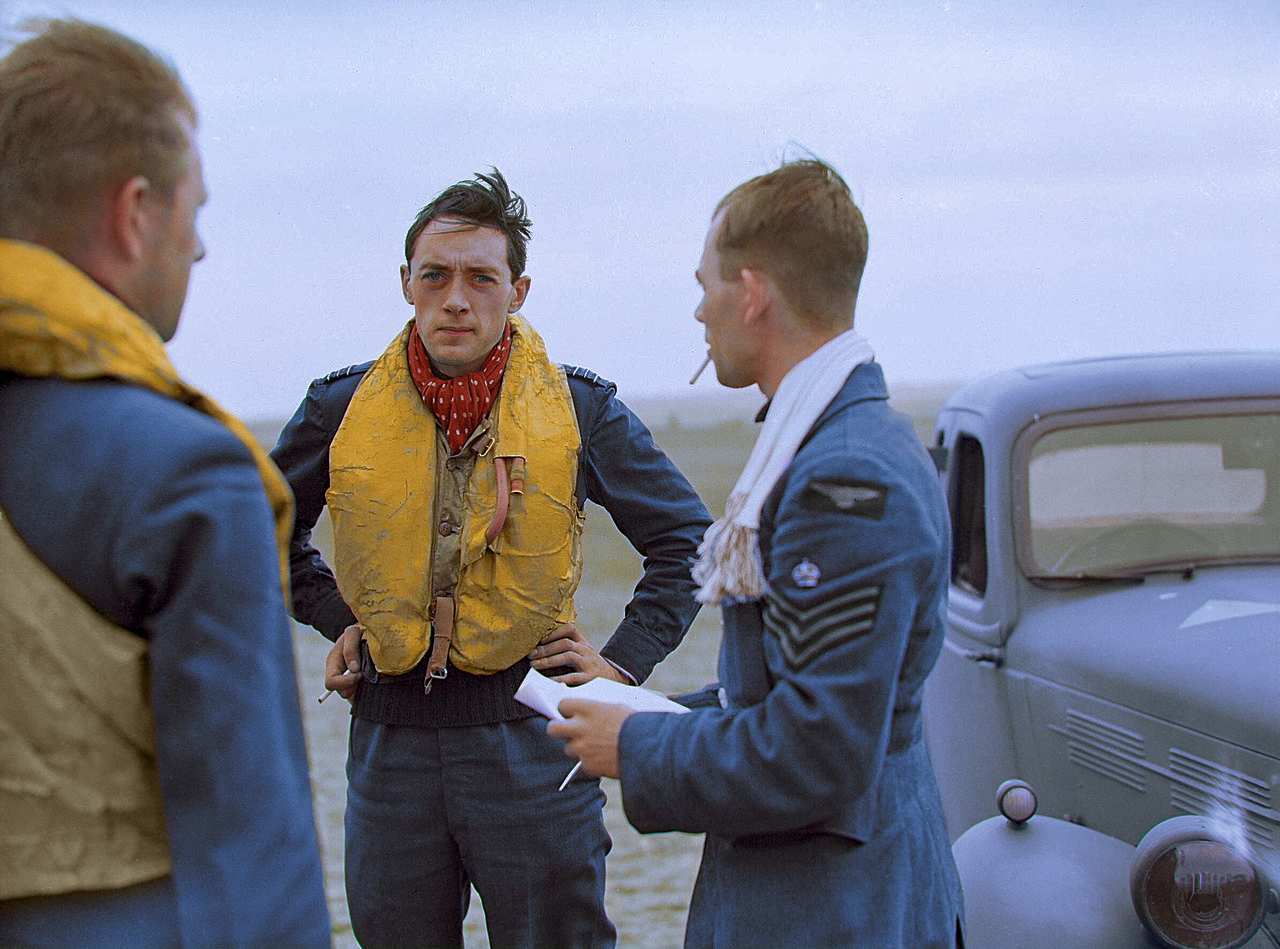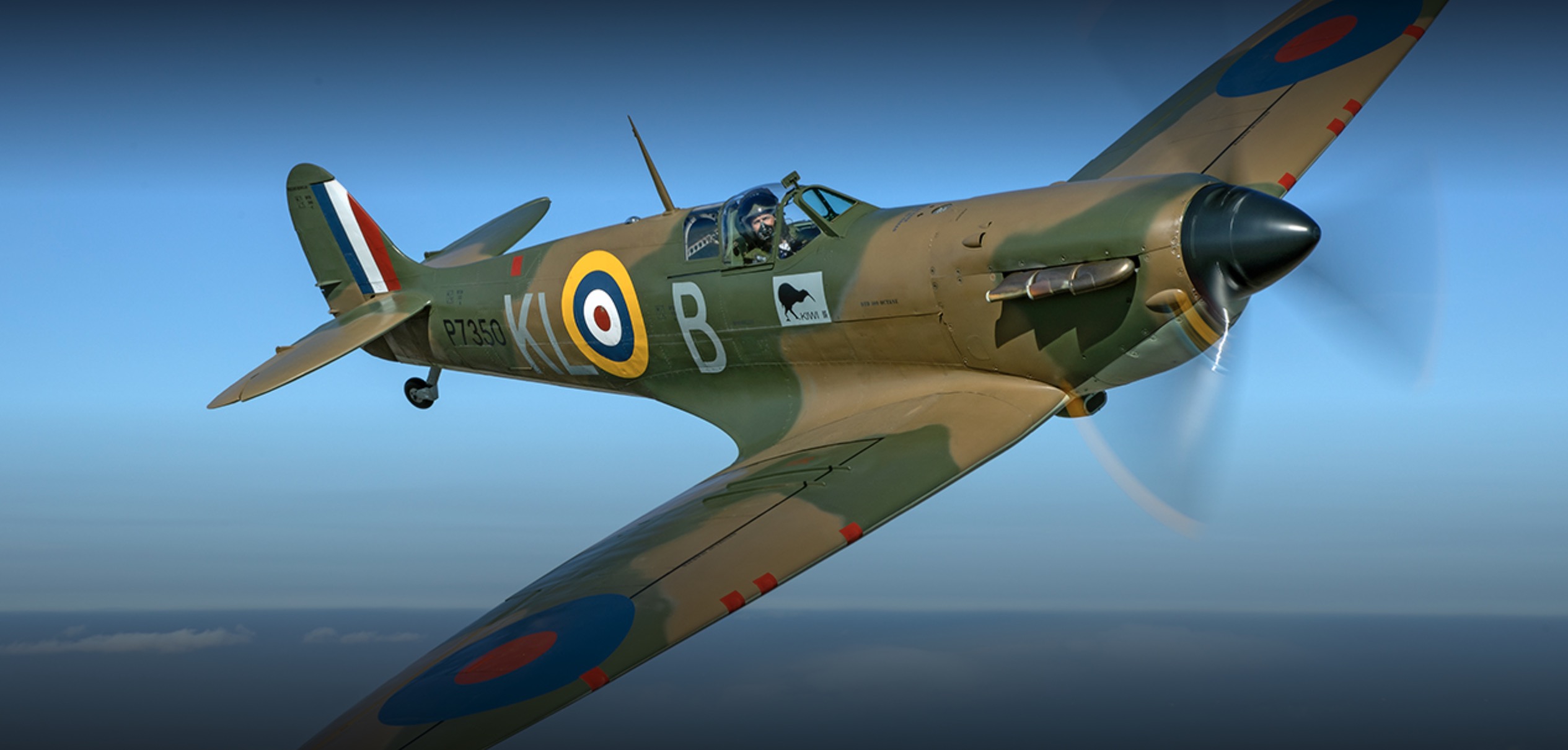Squadron leader Peter Townsend of the RAF exits his Hawker Hurricane fighter. England, July 1940. Townsend was an ace pilot and – in Churchill's own words – one of the “few”, who won the battle of Britain and to whom the British people owed their freedom. Though not as advanced as the Spitfire, the Hurricane was a sturdy, reliable fighter which matched its German counterpart, the Messerschmitt Me-109, except for speed and climbing rate.
September 19, 2025
2 | The battle of Britain
 Visit the Royal Air Force museum's exhibit on the Battle of Britain.
Visit the Royal Air Force museum's exhibit on the Battle of Britain.
➪ subject № 2, “The threat of a German invasion” ; Churchill's speech on 11 September 1940 and a letter from Maria Blewitt, a WAAF (someone who served in the Women's Auxiliary Air Force), on the same day.
➪ Watch: to learn more about Maria Blewitt.
➪ Also look at 9 iconic aircraft from the battle of Britain at the Imperial War Museum.
➣ subject № 3 The fear of impending invasion. An excerpt from Lord Alanbrooke's war diaries (8 September 1940) and a picture showing a soldier on the watch on a beach in southern England (8 October 1940).
➪ Read: How Churchill led Britain to victory in the Second World War, at the Imperial War Museum.
➪ WATCH: Andrew Marr's BBC documentary Britannia at bay, part 6 of his series on The making of modern Britain (Excerpts used in class).

Squadron leader Brian Lane, RAF (1917-1942)
❑ The Battle of Britain followed the battle of France in the summer of 1940.
The situation was critical for the UK : if Hitler succeeded in wiping out the RAF, he might try to land in Britain and crush the remnants of the British army. Besides, the German air force, the Luftwaffe, was mighty. The British were outnumbered, the outlook was gloomy.
❑ Against all odds, the RAF won the battle. Why ?
- Britain had built an efficient defence system based on RADAR (radio detection and ranging), so that German attacks could be detected and the incoming bombers intercepted. Called “Chain Home”, the RADAR network was operational just befire the beginning of WW2.
- the British were fighting above their homeland. If they were shot down, they could bail out, be rescued and fight another day. The Germans were either killed or caught. Soon, the German crews were depleted.
- Last but not least, the Germans made a strategic mistake. They began with attacks on the airfields (the right strategy). Then Churchill decided to bomb German cities, and Hitler decided to retaliate on British cities. Thus, the airfields were spared, and the RAF Fighter command could fight until victory.
➙ Churchill used that victory for the purpose of his war propaganda. In a famous speech, he said “never, in the course of human conflict, was so much owed by so many to so few”.

The Supermarine Spitfire was Britain's most advanced fighter aircraft in 1940. Powered by a Rolls-Royce Merlin engine, it was not as fast as its German nemesis, the Messerschmitt Bf 109 E, but it was swifter, which made it slightly superior to its German counterpart in dogfights.© Royal Air Force.
New subjects on the Battle of Britain :
❑ Subject № 4 : on the Battle of Britain: Hitler's instructions, the narrative of Dennis Newton, an ace fighter pilot of the RAF, and a photo of a German bomber over London.
❑ Subject № 5 : on the Battle of Britain: text by the English ace pilot Peter Townsend and picture of a crashed Messerschmitt.
❑ Subject № 6 : on the Battle of Britain: Churchill's famous speech “Never was so much owed by so many to so few” and a photo of Churchill visiting London after a German raid.
❑ Subject № 7 : On the Battle of Britain: Brian Lane, RAF fighter pilot and Churchill.
September 26, 2025
What the “many” owed to the “Few”.
➣ Read: Richard Overy, born in 1947, is the leading historian on the Battle of Britain. In his book, published in 2000, The Battle of Britain: The Myth and the Reality, he emphasises the importance of the battle for the British:
« The Battle of Britain mattered above all to the British people, who were saved the fate that overtook the rest of Europe. The result was one of the key moral moments of the war, when the uncertainties and divisions of the summer gave way to a greater sense of purpose and a more united people. This was a necessary battle, as Stalingrad was for the eastern front. In June Kenneth Clark reported to the Ministry of Information the effects of a recent morale campaign. He confessed that the campaign had not been a success: ‘people do not know what to do… difficulty arose in satisfying the people that the war could be won’. By November the mood was less desperate. A Gallup Poll showed 80 per cent of respondents confident that Britain would win in the end. Ministry informers reported a widespread desire to end the propaganda ‘Britain can take it’ and to substitute the slogan ‘Britain can give it!’
Even civilians enjoyed the sense that they, too, could contribute directly to the war effort through their own sacrifices and endeavours. There emerged an evident mood of exhilaration when the population found itself fighting at last after months of inactivity. Men flocked in thousands to join the Local Defence Volunteers, though they were poorly organized and scarcely armed by the time invasion was likely: many would have been treated, as the German side made clear at the time, as irregular militia, subject to summary execution. The Battle of Britain and the Blitz that followed contributed to the growing sense that this was a people’s war. There is more than a touch of irony that the battle was actually won by a tiny military elite, and at the cost of only 443 pilots in four months. The heroic defences on the eastern front, of Moscow and Sevastopol and Stalingrad, cost the defender, soldier and civilian, millions of war dead. The efficiency of Britain’s defensive effort in 1940 was one of its most remarkable features. The ‘few’ did indeed save the many from a terrible ordeal. »